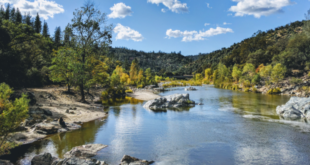The California Water Commission has increased the potential funding amounts for the seven projects in the Water Storage Investment Program (WSIP).
Proposition 1, approved by California voters in 2014, directed the Commission to create a competitive process for funding water storage projects based on their public benefits. The projects were evaluated and ranked on criteria established in the WSIP regulations.
In 2018 the California Water Commission approved Maximum Conditional Eligibility Determinations (MCEDs) for eight projects. Since that time, one project has withdrawn from the WSIP, and in 2021, the Commission voted to redirect a portion of that project’s MCED amount to bring two projects up to their requested amount (due to a shortage of funds, three projects received MCEDs less than they were eligible for) and to adjust the MCEDs of all existing projects to account for inflation at approximately 2.5%.
This month, with approximately $64 million in available funding remaining, the Commission voted to increase the potential funding amount for the Sites Project by $25 million, correcting a shortage from 2018 due to limited funding. In addition to adjusting the Sites Project’s MCED, the Commission also voted to adjust the MCEDs of all existing projects to account for inflation at approximately 1.5%.
| Project | 1.5% Inflation Adjustment | Resulting 2022 MCED |
| Chino Basin Conjunctive Use Program | $3,192,905 | $215,265,405 |
| Harvest Water Program | $4,328,709 | $291,841,209 |
| Kern Fan Groundwater Storage Project | $1,321,915 | $89,123,415 |
| Los Vaqueros Reservoir Expansion Project | $7,083,343 | $477,558,343 |
| Pacheco Reservoir Expansion Project | $7,477,633 | $504,141,383 |
| Sites Project | $12,984,241 | $875,396,369 |
| Willow Springs Water Bank and Conjunctive Use Project | $1,902,626 | $128,274,876 |
| Inflation Adjustment Total | $38,291,372 | $2,581,601,000 |
“I am excited to watch the work of the applicants as they move these projects forward, and to see them all reach their final award hearings so we can help make these projects a reality,” said Commission Vice-Chair Matthew Swanson.
Once an applicant obtains the necessary permits, final environmental documents, contracts for administration of public benefits, and contracts for 100% of the non-public benefit cost share, they can appear before the Commission for a final funding award.
 California Water News Daily Your Source For Water News in California
California Water News Daily Your Source For Water News in California


